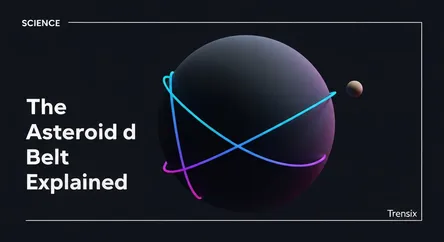Science
The Asteroid Belt Explained

Discover the Asteroid Belt, the vast ring of space rocks between Mars and Jupiter. Learn why it's a hot topic for science and what it means for us.
What is it?
The Asteroid Belt is a torus-shaped region in our Solar System, located roughly between the orbits of Mars and Jupiter. It is occupied by millions of asteroids or minor planets, ranging in size from the dwarf planet Ceres, about 940 km in diameter, to dust particles. Contrary to popular imagery, the belt is mostly empty space, with vast distances separating objects. It's believed to be composed of material from the Solar System's formation that was prevented from forming a planet by Jupiter's strong gravity. The total mass of the belt is estimated to be just 4% of Earth's Moon.
Why is it trending?
The Asteroid Belt is a focal point for cutting-edge space missions and future concepts. NASA's Psyche mission is currently en route to a unique metal-rich asteroid, promising new insights into planetary cores. Similarly, missions like Japan's Hayabusa2 and NASA's OSIRIS-REx have successfully returned samples from asteroids, providing invaluable data. The growing interest in asteroid mining for rare minerals and water also keeps the belt in the news, as it represents a potential source of off-world resources for future space exploration and industry.
How does it affect people?
Studying the Asteroid Belt is fundamental to understanding how our Solar System formed and evolved. These asteroids are like cosmic fossils. More directly, gravitational interactions can occasionally send asteroids on a trajectory towards Earth. This makes tracking Near-Earth Objects (NEOs) originating from the belt a crucial task for planetary defense agencies worldwide. In the long term, the resources within the belt could fuel humanity's expansion into space, providing raw materials for construction, fuel, and life support far from Earth, making it a key area for our species' future.